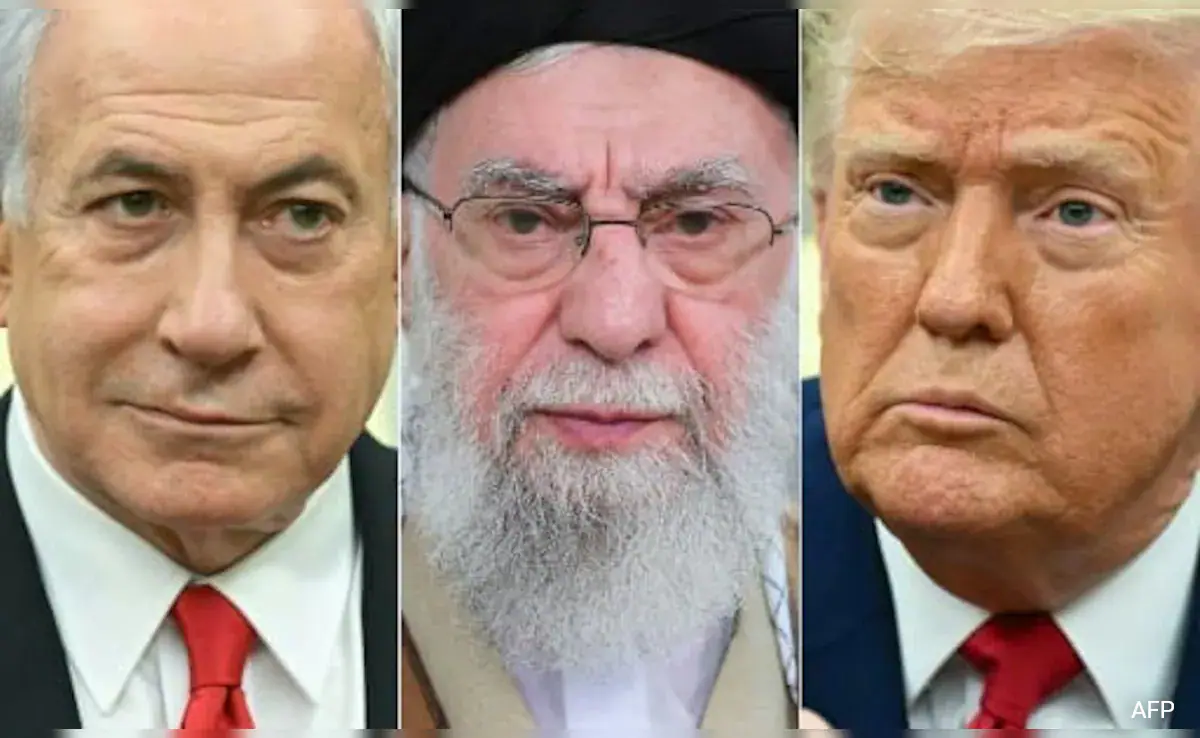Introduction: A Region on the Brink
The geopolitical crisis in the Middle East has reached a boiling point in 2025. The Israel-Iran conflict, compounded by aggressive US military involvement, has intensified regional instability. With Israel conducting deadly strikes across Gaza and Iran’s nuclear facilities under US attack, the situation has spiraled into a multifaceted confrontation that threatens international peace and security.
In this article, we explore the timeline of events, geopolitical players, Iran’s response strategies, and the global implications for oil trade, diplomacy, and nuclear security. We also analyze the rhetoric, reactions, and real-time consequences unfolding across the globe.
US Strikes on Iranian Nuclear Facilities: The Spark
On June 21, 2025, US President Donald Trump ordered coordinated airstrikes on three of Iran’s nuclear sites. This bold and highly controversial military action was justified by Washington as a preemptive measure to halt Iran’s alleged nuclear weapon development. While Trump claimed the sites were “obliterated,” defense experts argue that a true assessment of damage will take time.
Targets of US Airstrikes:
- Fordow Enrichment Facility
- Natanz Nuclear Facility
- Arak Heavy Water Reactor
The attack triggered condemnation from Iran and drew mixed reactions globally. Trump hailed the mission as a success, asserting that it eliminated Iran’s nuclear threat. But experts like Lawrence Korb suggest this may be premature, as Iran has long maintained the capacity to enrich uranium, not necessarily to develop nuclear weapons.
Iran’s Response Options: Deterrence or Diplomacy?
Ali Hashem, reporting from Tehran, confirms that Iran’s Supreme National Security Council is carefully weighing its response. While national pride and strategic interests push toward retaliation, the risks of direct confrontation with the US are immense.
Likely Iranian Retaliation Strategies:
- Ballistic Missiles: Despite weakened long-range capabilities, Iran retains short-range missile systems capable of striking US bases in the Gulf.
- Swarm Naval Tactics: Iran’s Revolutionary Guard Corps Navy could deploy speedboats and drones in overwhelming numbers to target US naval assets.
- Proxy Attacks: The Houthis in Yemen have threatened US warships in the Red Sea, while Hezbollah and other militias could escalate operations.
- Cyber Warfare: Iran may insert malware into Western digital infrastructure as part of its asymmetric retaliation.
Still, the risk of a disproportionate US response forces Iran to tread carefully.
Gaza Under Fire: Humanitarian Collapse
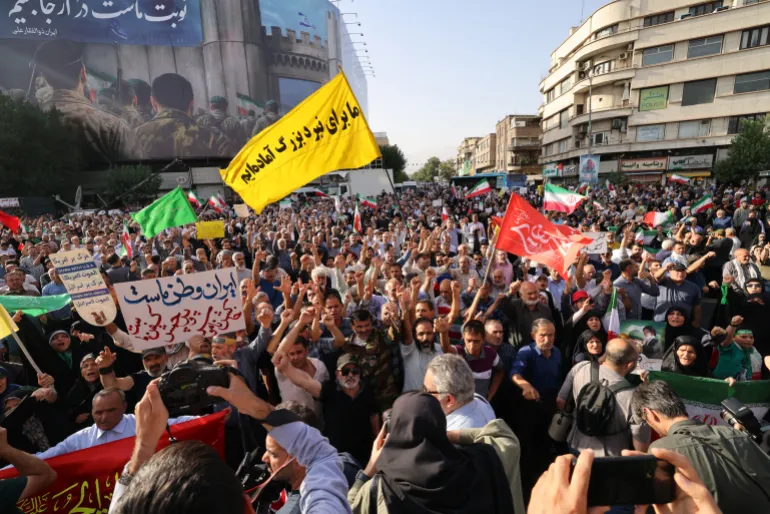
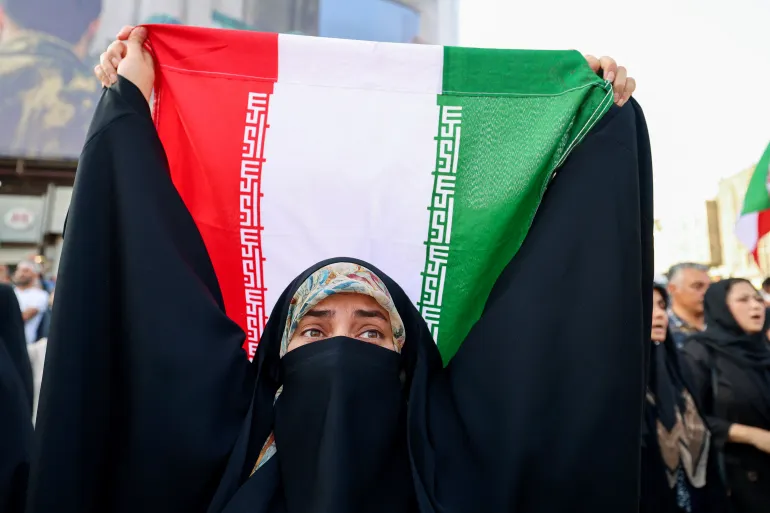
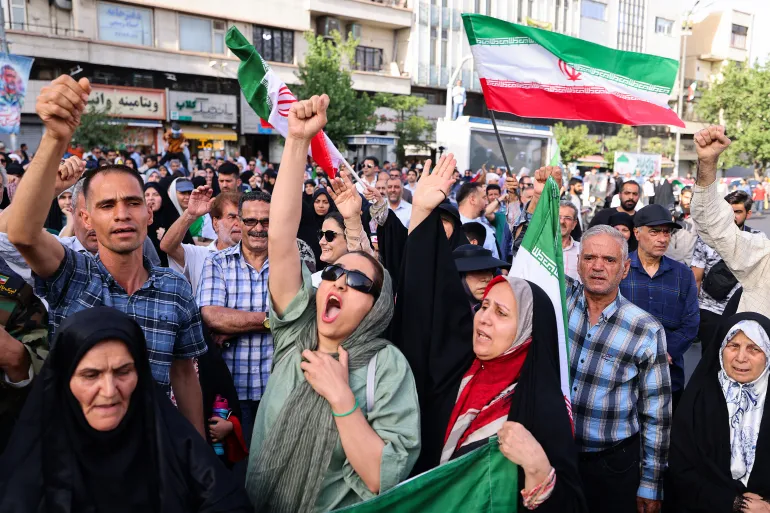
While the Iran-US-Israel conflict grabs headlines, the humanitarian situation in Gaza has reached catastrophic levels. Israeli airstrikes are targeting residential areas, particularly around Deir el-Balah, as reported by Hind Khoudary.
Gaza’s Critical Humanitarian Stats:
- Ambulances non-operational due to fuel shortages
- Hospitals out of medical supplies
- Aid seekers killed near distribution points
With the Gaza Humanitarian Foundation’s operations disrupted and hospitals collapsing, international outrage is growing.
Global Shipping Threatened: Hormuz, Red Sea, Aden
Iran’s strategic location gives it control over vital maritime chokepoints, and the threat to global shipping is real and escalating. BIMCO, the largest global shipowner organization, warns of rising threats in the Strait of Hormuz, Gulf of Aden, and Red Sea.
Current Risks to Maritime Trade:
- Drone/missile attacks on oil tankers
- Houthis targeting Israel/US-affiliated ships
- Increased insurance premiums and freight costs
Maersk and Hapag-Lloyd report high alert status, and maritime freight rates have surged due to the ongoing conflict.
Hezbollah and Houthis: Vocal and Armed Support
Yemen’s Houthi rebels condemned the US airstrikes as a cowardly attack and a violation of international law. Hezbollah, too, warned that the strikes were a dangerous escalation, giving Iran full rights to retaliate.
Both groups emphasized continued support for Iran’s “resistance” against the US and Israel, warning of chaos if aggression continues. Hezbollah called the attack on Iran a deliberate provocation aimed at expanding the war.
Diplomatic Backlash and Global Condemnation
Several countries and organizations have voiced strong objections:
- OIC condemned the strikes and demanded Israel stop its aggression
- Germany urged Iran to return to nuclear talks
- Pakistan condemned the US strikes a day after nominating Trump for the Nobel Peace Prize
- India called for de-escalation during a phone call between PM Modi and Iranian President Pezeshkian
Mass protests also erupted in The Hague, where demonstrators marched to the Peace Palace demanding an end to hostilities.
The Nuclear Question: Will Iran Quit the NPT?
Mark Fitzpatrick from IISS warns that if Iran leaves the Nuclear Non-Proliferation Treaty (NPT), it would lose its legal obligation not to build nuclear weapons.
Such a move could trigger a nuclear arms race in the Middle East, with countries like Saudi Arabia potentially following suit. Withdrawal from the NPT would also eliminate International Atomic Energy Agency (IAEA) oversight.
Israel’s Reaction and US-Israel Alignment
In Israel, the airstrikes on Iran are being described in euphoric and even biblical language. Editor Meron Rapoport notes public joy but also rising fear, as Tel Aviv was hit during Iran’s missile response.
Israeli Prime Minister Netanyahu and Trump publicly praised each other, suggesting deep coordination in the operation. Despite previous friction between the two leaders, the strike has brought them closer politically.
Daily Casualties in Gaza – June 22, 2025
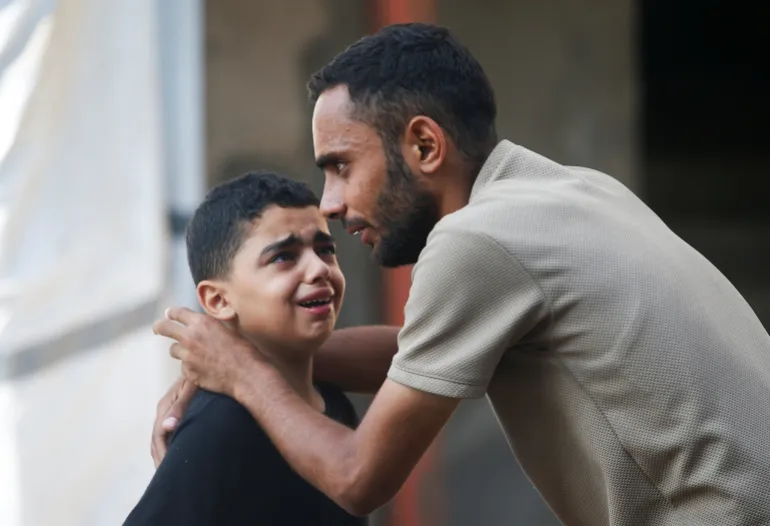
| Category | Number of People Affected |
|---|---|
| Total Palestinians killed | 37 |
| Killed while seeking aid | 8 |
| Injured (estimated) | 100+ |
| Children among the dead | Unconfirmed, likely included |
| Medical staff casualties | Not specified |
Major Areas Targeted in Gaza (Reported Today)
| Location | Type of Area | Casualty Report |
|---|---|---|
| Deir el-Balah (Central Gaza) | Residential | High casualties reported |
| Rafah (Southern Gaza) | Displacement camps | Aid seekers targeted |
| Gaza City | Urban neighborhoods | Ongoing shelling |
| Jabalia (Northern Gaza) | Residential buildings | Homes destroyed |
Humanitarian Crisis Overview in Gaza
| Essential Resource | Current Status |
|---|---|
| Fuel for ambulances | Completely depleted – No emergency mobility |
| Medical supplies | Critically low – Hospitals unable to treat cases |
| Electricity | Severely rationed or absent |
| Internet & Communication | Severely restricted by state |
| Food & Water | Distribution severely disrupted |
Recent Pattern of Israeli Attacks on Gaza (Past 7 Days)
| Date | Estimated Death Toll | Nature of Attack |
|---|---|---|
| June 16, 2025 | 24 | Airstrikes on residential areas |
| June 18, 2025 | 30 | Bombardment near hospitals and UNRWA |
| June 20, 2025 | 42 | Strikes on markets and aid stations |
| June 22, 2025 | 37 | Ongoing bombardment, aid seekers hit |
Impact on Healthcare Services in Gaza
| Facility | Operational Status | Challenges |
|---|---|---|
| Al-Shifa Hospital | Partially functioning | No fuel, overcapacity |
| Al-Aqsa Martyrs Hospital | Critically low supplies | Unable to perform surgeries |
| Indonesian Hospital | Infrastructure damage reported | Shortage of staff and equipment |
| Ambulance Services | Mostly non-operational | No fuel or safe passage |
Timeline of Events in the Iran-US-Israel Conflict (June 2025)
| Date | Event |
|---|---|
| June 13, 2025 | Houthis threaten US and Israeli-affiliated shipping in Red Sea |
| June 21, 2025 | US launches airstrikes on Iran’s nuclear sites (Fordow, Natanz, Arak) |
| June 22, 2025 | Iran launches missile attacks on Israeli cities |
| June 23, 2025 | Tel Aviv airport partially resumes flights under safety protocols |
| June 24, 2025 | Hezbollah and Houthis issue threats; protests erupt in The Hague |
| June 25, 2025 | PM Modi and Iran’s President hold diplomatic phone call |
Potential Iranian Retaliation Strategies
| Category | Details |
|---|---|
| Missile Strikes | Short-range ballistic missiles targeting US Gulf bases |
| Naval Tactics | Swarm attacks with fast boats, naval drones in Strait of Hormuz |
| Cyber Attacks | Malware and DDoS attacks on critical US infrastructure |
| Proxy Warfare | Houthis, Hezbollah targeting US/Israel-linked assets across the region |
| Economic Warfare | Sea mine deployment or blockade of shipping lanes like the Strait of Hormuz |
Major Global Reactions to the Conflict
| Country/Group | Response |
|---|---|
| India | Called for de-escalation and diplomatic resolution |
| Pakistan | Condemned US strikes; emphasized international law |
| Germany | Urged Iran to re-engage in nuclear talks |
| OIC (57 nations) | Condemned Israeli and US actions; called for international accountability |
| Hezbollah & Houthis | Vowed support for Iran and condemned US/Israeli “aggression” |
Global Shipping Impact of the Conflict
| Area Affected | Threat Level | Issues |
|---|---|---|
| Strait of Hormuz | High | Possible attacks on oil tankers and cargo ships using drones/missiles |
| Red Sea | High | Houthi threats to US/Israeli-affiliated vessels |
| Gulf of Aden | Medium | Risk of proxy attacks, piracy, and increased insurance premiums |
| Dubai Ports (Jebel Ali) | Medium | Freight rate increases, route adjustments, security alert raised |
Current Status of Iran’s Nuclear Facilities Post-Airstrikes
| Facility | Reported Damage | Pre-Strike Capability | Current Status (Est.) |
|---|---|---|---|
| Fordow | Directly hit with bunker busters | 60% uranium enrichment | Unknown, suspected severe damage |
| Natanz | Targeted with Tomahawk missiles | Advanced centrifuge installations | Likely damaged but not obliterated |
| Arak | Bombed to disrupt heavy water work | Plutonium research facility | Functionality unclear post-strike |
Potential Outcomes and Global Implications
Short-Term Outlook:
- Continued tit-for-tat strikes in the Middle East
- Disrupted oil supply chains and rising prices
- Heightened security alerts for shipping and embassies
Long-Term Risks:
- Iran withdrawing from the NPT
- Middle East nuclear proliferation
- A new Cold War scenario with global bloc formation
Conclusion: War, Diplomacy, or Something In Between?
As Marwan Bishara of Al Jazeera explains, Iran is not limited to just war or surrender. The country could choose strategic silence, limited response, or covert retaliation to maintain deterrence without full-scale war.
The stakes are sky-high. With multiple actors, nuclear threats, humanitarian crises, and economic ramifications, the world watches with bated breath.
The decisions made in Tehran, Tel Aviv, and Washington in the coming days will shape not just the fate of the Middle East, but the future of global security.
FAQs: Israeli Strikes on Gaza – June 2025
Q1: How many Palestinians were killed in Gaza on June 22, 2025?
A: According to medical sources and Al Jazeera Arabic, at least 37 Palestinians were killed across the Gaza Strip on June 22, 2025, due to Israeli airstrikes. Among them, eight were reportedly killed while seeking humanitarian aid.
Q2: Which areas in Gaza are being most affected by Israeli attacks?
A: Major areas under heavy bombardment include Deir el-Balah (central Gaza), Rafah (southern Gaza), Gaza City, and Jabalia (northern Gaza). Residential neighborhoods, displacement camps, and aid distribution points have all been targeted.
Q3: What is the current status of the healthcare system in Gaza?
A: Gaza’s healthcare system is on the brink of collapse. Most hospitals are critically short on fuel, medical supplies, and staff. Ambulances are no longer operational due to fuel shortages, and patients are being turned away from overcrowded facilities.
Q4: Are civilians and aid seekers being targeted in the Gaza Strip?
A: Yes. Multiple credible reports indicate that civilians and aid seekers have been directly affected. On June 22, eight people were killed while attempting to collect humanitarian aid near Gaza Humanitarian Foundation distribution points.
Q5: Why are ambulances in Gaza not responding to emergencies?
A: Ambulance services have stopped functioning due to a complete lack of fuel. This has severely hindered emergency response and has left injured civilians without access to critical medical care.
Q6: What international laws govern attacks on civilians during wartime?
A: International Humanitarian Law (IHL), including the Geneva Conventions, strictly prohibits targeting civilians or civilian infrastructure. Deliberate strikes on hospitals, aid seekers, or ambulances may constitute war crimes under international law.
Q7: Has the international community responded to the situation in Gaza?
A: While some countries and international organizations have condemned the attacks and expressed concern, concrete action remains limited. Calls for ceasefire and humanitarian corridors have been made but not universally enforced.
Q8: What is the humanitarian situation like for Palestinians in Gaza?
A: The humanitarian crisis in Gaza is worsening daily. There are severe shortages of food, clean water, medical supplies, and electricity. Internet access is restricted, and fuel scarcity has crippled logistics and emergency response.
Q9: Are any ceasefire negotiations ongoing between Israel and Palestinian factions?
A: As of now, there is no confirmed ceasefire or truce. Hostilities continue on multiple fronts, and diplomatic efforts have yet to produce a sustainable solution to the violence.
Q10: How can international observers and media verify casualties in Gaza?
A: Verification is increasingly difficult due to internet blackouts, limited journalist access, and collapsed communication infrastructure. Most data comes from hospital reports, NGOs on the ground, and independent journalists using proxy connections.

